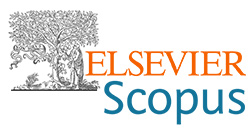Deep learning-based underwater metal object detection using input image data and corrosion protection of mild steel used in underwater study: A case study: Part A: Deep learning-based underwater metal object detection using input image data
DOI:
https://doi.org/10.5937/zasmat2201005RAbstract
Due to the importance of underwater exploration in the development and utilization of deep-sea resources, underwater autonomous operation is more and more important to avoid the dangerous high-pressure deep-sea environment. For underwater autonomous operation, intelligent computer vision is the most important technology. In an underwater environment, weak illumination and low-quality image enhancement, as a pre-processing procedure, is necessary for underwater vision. In this paper, introduced Deep learning-based Underwater Metal object detection using input Image data by using several step to improve the model performance. In this experimentation we are using TURBID dataset 100 images to validate the performance. And also we compare the performance result by given the input images in different validation level. In first input image is initially preprocessed and that images is given to the KFCM-Segmentation. The segmented images are given to the DWT Extraction to extract the features from those images. And finally the Convolution Neural Network (CNN) is used to classify the images to detect the objects. Also this proposed model attained the classification accuracy of 98.83%. This method is much suitable for detect the objects in underwater robotically. Metallic parts of machines of ships or airplanes may submerge in sea water. They may undergo corrosion when they come in contact with sea water which contains 3.5% sodium chloride. This is most commonly responsible for the corrosive nature of the seawater. The robots made of materials such as mild steel may also undergo corrosion when they come in contact with sea water, while is search. If a paint coating is given, it will control the corrosion of these proposed materials. Hence this work is undertaken. Mild steel is coated with Asian guard red paint. Corrosion resistance of mild in 3.5% sodium chloride solution is measured before coating and after coating by electrochemical studies such as polarization study and AC impedance spectra. The corrosion inhibition efficiency offered by red paint to mild steel in 3.5% sodium chloride is 99.98%.Keywords:
input Image data, Convolutional Neural Network (CNN), Fuzzy c-means clustering and TURBID dataset polarization study, AC impedance spectra, sea waterReferences
Baker, S.R.K. (1981) Optical properties of the clearest natural waters (200-800 nm).Applied Optics, 20: 177-184
https://doi.org/10.1364/AO.20.000177
Ballard, R., Stager, L., Master, D., Yoerger, D., Mindell, D., Whitcomb, L., Singh, H., Piechota, D. (2002) Iron Age Shipwrecks in Deep Water off Ashkelon, Israel.American Journal of Archaeology, 106: 151-168
https://doi.org/10.2307/4126241
Basha, D., Khalandar, D., Venkateswarlu, T. (2019) Linear Regression Supporting Vector Machine and Hybrid LOG Filter-Based Image Restoration.Journal of Intelligent Systems, 29(1): 1480-1495
https://doi.org/10.1515/jisys-2018-0492
Brown, B.E., Dunne, R.P., Goodson, M.S., Douglas, A.E. (2000) Marine ecology: Bleaching patterns in reef corals.Nature, 404: 142-146
https://doi.org/10.1038/35004657
Bruno, F., Bianco, G., Muzzupappa, M., Barone, S., Razionale, A.V. (2011) Experimentation of structured light and stereo vision for underwater 3D reconstruction.ISPRS Journal of Photogrammetry and Remote Sensing, 66: 508-518
https://doi.org/10.1016/j.isprsjprs.2011.02.009
Caffaz, A., Caiti, A., Casalino, G., Turetta, A. (2010) The Hybrid Glider/AUV Folaga.IEEE Robotics & Automation Magazine, 17: 31-44
https://doi.org/10.1109/MRA.2010.935791
Chang, P.C., Flitton, J., Hopcraft, K., Jakeman, E., Jordan, D., Walker, J. (2003) Improving visibility depth in passive underwater imaging by use of polarization.Applied Optics, 42(15): 2794-2794
https://doi.org/10.1364/AO.42.002794
Cho, H., Gu, J., Joe, H., Asada, A., Yu, S. (2015) Acoustic beam profile-based rapid underwater object detection for an imaging sonar.Journal of Marine Science and Technology, 20: 180-197
https://doi.org/10.1007/s00773-014-0294-x
Corchs, S.R.S. (2010) Underwater Image Processing: State of the Art of Restoration and Image Enhancement Methods.EURASIP Journal on Advances in Signal Processing, 10: 746-752
https://doi.org/10.1155/2010/746052
Foresti, G.L., Gentili, S. (2000) A vision based system for object detection in underwater images.International Journal of Pattern Recognition and Artificial Intelligence, 14: 167-188
https://doi.org/10.1142/S021800140000012X
Gostnell, C., Yoos, J. (2005) Efficacy of an interferometric sonar for hydrographic surveying: Do interferometers warrant an in-depth examination.Hydrogr. J, 118: 17-22
Holjevac, I. (2003) A vision of tourism and the hotel industry in the 21st century.International Journal of Hospitality Management, 22: 129-134
https://doi.org/10.1016/S0278-4319(03)00021-5
Johnson-Roberson, M., Pizarro, O., Williams, S., Mahon, I. (2010) Generation and visualization of large-scale three-dimensional reconstructions from underwater robotic surveys.Journal of Field Robotics, 27: 21-51
https://doi.org/10.1002/rob.20324
Krizhevsky, A., Sutskever, I., Hinton, G.E. (2017) ImageNet classification with deep convolutional neural networks.Communications of the ACM, 60(6): 84-90
https://doi.org/10.1145/3065386
Li, L., Eustice, R.M., Johnson-Roberson, M. (2015) High-level visual features for underwater place recognition. in: Proceedings of the IEEE International Conference on Robotics and Automation (ICRA), Seattle, WA
Liu, W., Xu, Z., Yang, L. (2015) SIMO detection schemes for underwater optical wireless communication under turbulence.Photonics Research, 3, 48-53
https://doi.org/10.1364/PRJ.3.000048
Masmitja, I., Gomariz, S., Del, R.J., Kieft, B., O'Reilly, T. (2016) Range-only underwater target localization: Path characterization. in: OCEANS 2016 MTS/IEEE Monterey, Monterey, 1-7
https://doi.org/10.1109/OCEANS.2016.7761246
Negahdaripour, S., Madjidi, H. (2003) Stereovision imaging on submersible platforms for 3-D mapping of benthic habitats and sea-floor structures.IEEE Journal of Oceanic Engineering, 28: 625-650
https://doi.org/10.1109/JOE.2003.819313
Ortiz, A., Simó, M., Oliver, G. (2002) A vision system for an underwater cable tracker.Machine Vision and Applications, 13: 129-140
https://doi.org/10.1007/s001380100065
Peng, Y.S.F. (2009) Laser underwater target detection based on Gabor transform. in: 4th International Conference on Computer Science & Education, Nanning, China: IEEE, 95-97
https://doi.org/10.1109/ICCSE.2009.5228518
Perez, J., Attanasio, A.C., Nechyporenko, N., Sanz, P.J. (2017) A Deep Learning Approach for Underwater Image Enhancement. in: International Work-Conference on the Interplay Between Natural and Artificial Computation, Cham: Springer International Publishing, 183-192
https://doi.org/10.1007/978-3-319-59773-7_19
Piper, D., Cochonat, P., Morrison, M. (1999) The sequence of events around the epicentre of the 1929 Grand Banks earthquake: initiation of debris flows and turbidity current inferred from sidescan sonar.Sedimentology, 46, 79-97
https://doi.org/10.1046/j.1365-3091.1999.00204.x
Spampinato, C., Chen-Burger, Y., Nadarajan, G., Fisher, R. (2008) Detecting, tracking and counting fish in low quality unconstrained underwater videos. VISAPP, 514-519
Xue, X., Pan, D., Zhang, X., Luo, B., Chen, J., Guo, H. (2015) Faraday anomalous dispersion optical filter at ^133Cs weak 459 nm transition.Photonics Research, 3, 275-278
https://doi.org/10.1364/PRJ.3.000275
Zhang, X., Weijun, P., Wu, Z., Chen, J., Mao, Y., Wu, R. (2020) Robust Image Segmentation Using Fuzzy C-Means Clustering With Spatial Information Based on Total Generalized Variation.IEEE Access, 8: 95681-95697
https://doi.org/10.1109/ACCESS.2020.2995660
Zhu, Y., Chang, L., Dai, J., Zheng, H., Zheng, B. (2016) Automatic object detection and segmentation from underwater images via saliency-based region merging. in: Proceedings of the OCEANS, Shanghai, China, 10-13 April 2016, Shanghai, China
Downloads
Published
Issue
Section
License
Copyright (c) 2022 CC BY 4.0 by Authors

This work is licensed under a Creative Commons Attribution 4.0 International License.






